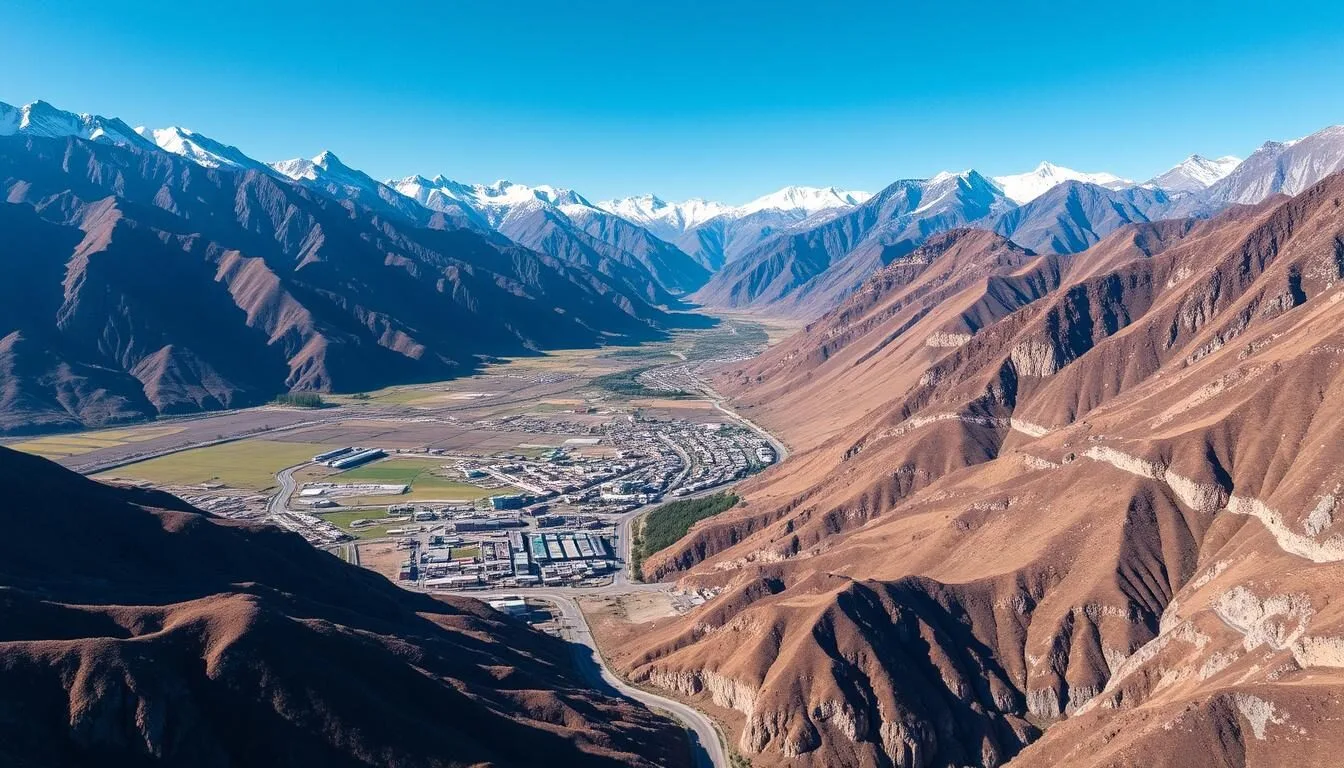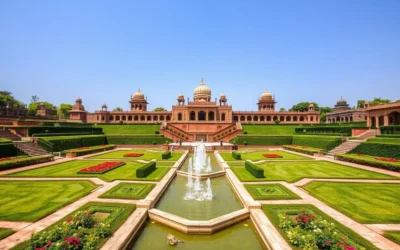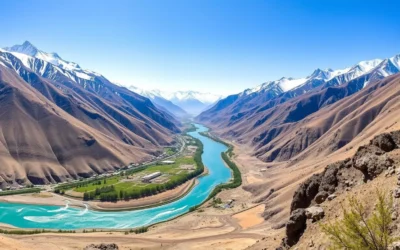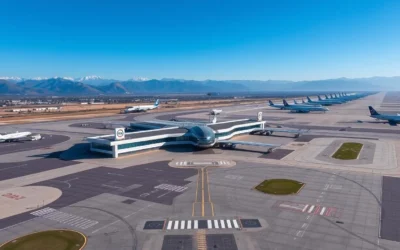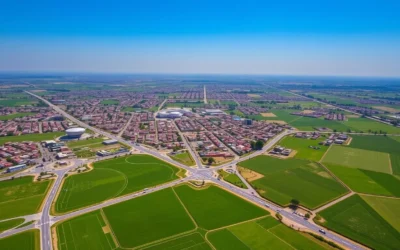✓ Accommodations✓ Flights✓ Rental Cars
Nestled in the heart of the Karakoram mountain range, Gilgit-Baltistan is home to five of the world’s fourteen 8,000-meter peaks, making it the most concentrated collection of towering mountains on the planet. This remote northern region of Pakistan offers travelers a rare glimpse into a world where ancient traditions thrive against a backdrop of some of Earth’s most spectacular landscapes. From the turquoise waters of Attabad Lake to the jagged peaks of the Passu Cones, Gilgit beckons adventurers and cultural enthusiasts alike to explore its treasures.
Getting to Gilgit
Aerial view of Gilgit city surrounded by the majestic Karakoram mountains
Reaching Gilgit is an adventure in itself, with options that range from breathtaking flights to epic road journeys along the legendary Karakoram Highway.
By Air
The quickest way to reach Gilgit is by air. Pakistan International Airlines (PIA) operates flights from Islamabad to Gilgit, weather permitting. The 45-minute flight offers spectacular views of Nanga Parbat and the surrounding peaks, making it worth the ticket price alone. However, flights are frequently canceled due to unpredictable mountain weather, so flexibility in your schedule is essential.
Ready to book your flight to Gilgit?
Compare prices and find the best deals on flights to Gilgit from major cities.
By Road
The legendary Karakoram Highway (KKH) connects Islamabad to Gilgit, offering one of the world’s most spectacular road journeys. The 15-18 hour drive takes you through diverse landscapes, from the lush hills of Abbottabad to the arid mountains of Chilas. NATCO and other private companies operate comfortable buses that depart from Islamabad in the evening and arrive in Gilgit the following morning.
For a more flexible journey, consider hiring a private vehicle with a driver familiar with the mountain roads. This allows you to stop at viewpoints and make detours to attractions along the way.
Travel Tip: The Babusar Pass route (open from June to October) is shorter and more scenic than the year-round Chilas route. However, it closes during winter due to heavy snowfall.
Best Time to Visit Gilgit
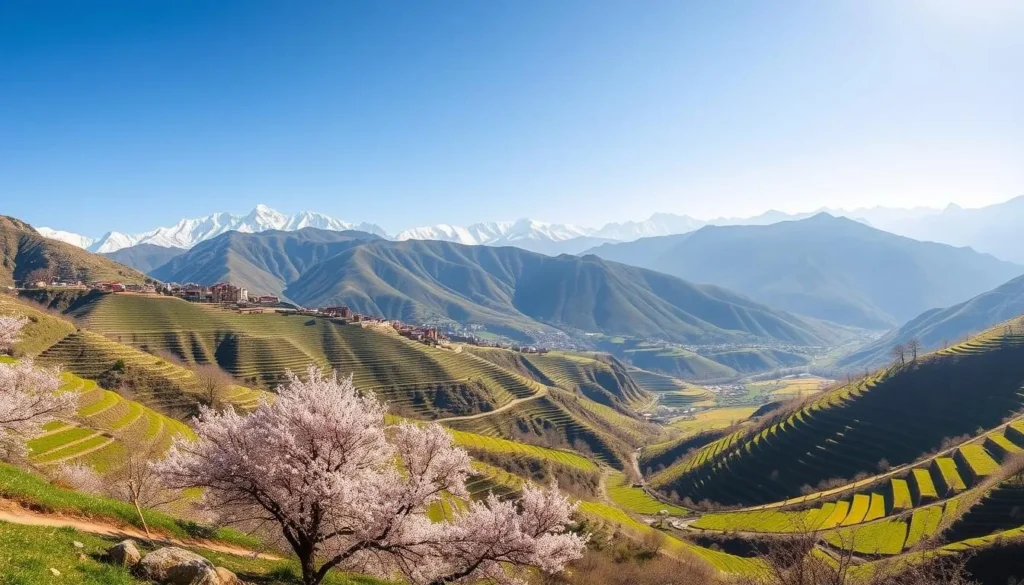
Spring in Hunza Valley brings cherry blossoms against snow-capped peaks
Gilgit-Baltistan experiences distinct seasons, each offering a unique perspective on this mountain paradise:
| Season | Months | Weather | Highlights |
| Spring | April – May | Mild days (15-25°C), cool nights | Cherry and apricot blossoms in Hunza, reopening of high passes |
| Summer | June – August | Warm days (20-30°C), pleasant nights | Ideal for trekking, all areas accessible, local festivals |
| Autumn | September – October | Mild days (10-20°C), cold nights | Golden foliage, harvest season, clear mountain views |
| Winter | November – March | Cold days (0-10°C), freezing nights | Snow-covered landscapes, fewer tourists, limited accessibility |
The optimal time to visit Gilgit is during late spring (May) and early autumn (September-October) when the weather is pleasant, skies are clear, and tourist crowds are manageable. Summer brings more domestic tourists, while winter sees many roads closed due to snow, particularly the high mountain passes like Khunjerab.
Local Insight: If you’re interested in local culture, plan your visit during the Shandur Polo Festival in early July, when teams from Chitral and Gilgit compete in the world’s highest polo tournament at 3,700 meters above sea level.
Getting Around Gilgit-Baltistan
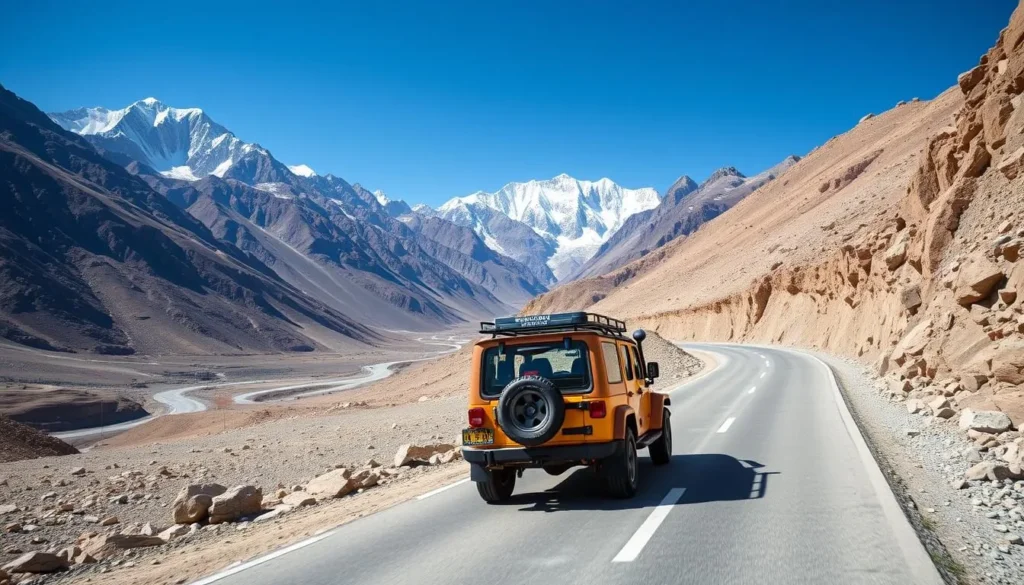
4×4 jeeps are essential for exploring the remote areas of Gilgit-Baltistan
Navigating the vast and mountainous terrain of Gilgit-Baltistan requires some planning. Here are your best options:
Hire a Private Vehicle
For maximum flexibility, hiring a private vehicle with a local driver is ideal. This allows you to create your own itinerary and stop whenever you want to take photos or explore. A 4×4 vehicle is essential for many side trips, especially to places like Fairy Meadows or remote valleys.
Explore Gilgit at your own pace
Rent a reliable vehicle with optional driver services for your Gilgit adventure.
Public Transport
NATCO and private minivans connect major towns like Gilgit, Hunza, Skardu, and Astore. These are affordable but run on limited schedules and can be crowded. For remote villages, you’ll need to use local jeeps or shared taxis that depart when full.
Hitchhiking
Surprisingly, hitchhiking is relatively common and safe in Gilgit-Baltistan. Local hospitality means drivers often stop to offer rides, especially to foreign travelers. However, for reliability and safety, this should be a backup rather than your primary transportation plan.
Transportation Tip: For trips to attractions like Fairy Meadows, Naltar Valley, or Hushe Valley, specialized jeep services operate from nearby towns. These typically charge a fixed rate and can be arranged through your accommodation.
Where to Stay in Gilgit-Baltistan
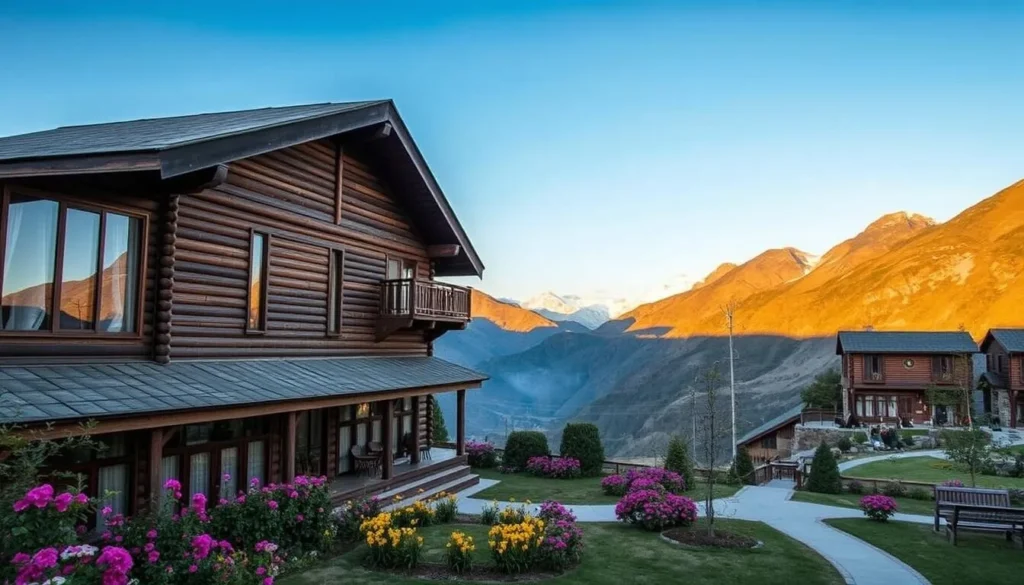
Traditional mountain lodges offer authentic stays with breathtaking views
Accommodation in Gilgit-Baltistan ranges from basic guesthouses to luxury resorts. Here’s where to stay in the main areas:
Gilgit City
As the administrative capital, Gilgit offers the widest range of accommodation options. Madina Hotel 2 is popular among backpackers for its central location and courtyard atmosphere. Mid-range options include Raahi Hotel and Serena Hotel Gilgit for those seeking more comfort.
Hunza Valley
The picturesque Hunza Valley has seen a boom in boutique hotels and guesthouses. In Karimabad, the Hunza Serena Inn offers luxury with traditional architecture, while Eagle’s Nest Hotel provides panoramic views from its ridge-top location. Budget travelers can find numerous family-run guesthouses in the old town.
Fairy Meadows
Accommodation at Fairy Meadows is limited to basic wooden cabins and camping options. The Greenland Hotel and Raikot Serai offer simple rooms with incredible views of Nanga Parbat. Advance booking is essential during peak season.
Skardu
Skardu serves as the gateway to K2 and the Baltoro Glacier. Luxury options include the historic Shigar Fort Residence (part of the Serena chain), while K2 Motel and Mashabrum Hotel cater to mid-range travelers.
Find your perfect stay in Gilgit-Baltistan
From traditional mountain lodges to modern hotels, book accommodations that match your style and budget.
Accommodation Tip: During summer (June-August), accommodations fill up quickly, especially in popular areas like Hunza and Fairy Meadows. Book at least 1-2 months in advance for these periods.
Top Attractions in Gilgit-Baltistan
From ancient forts to breathtaking mountain vistas, Gilgit-Baltistan offers a diverse range of attractions that will leave you spellbound. Here are the must-visit places in the region:
1. Hunza Valley
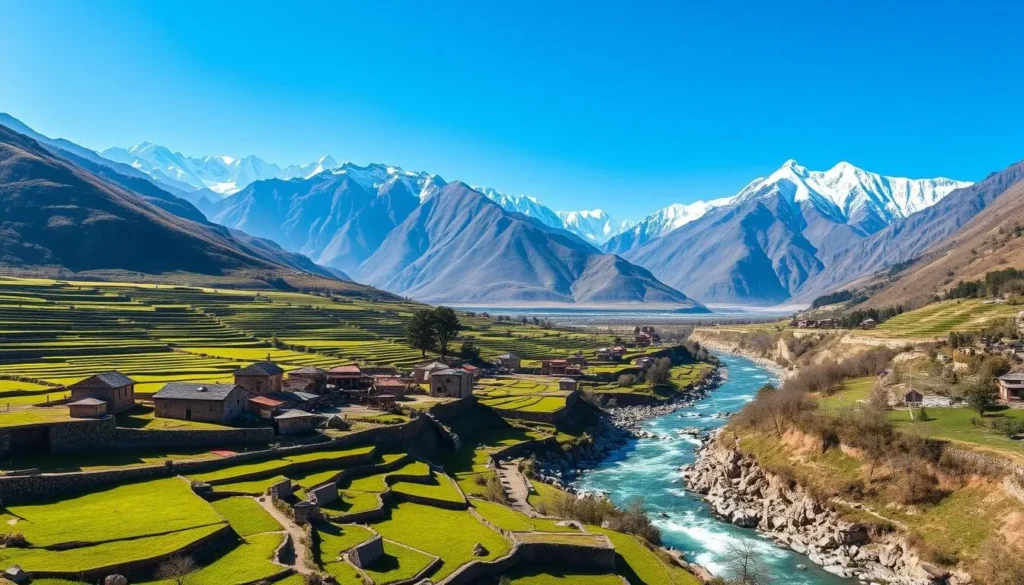
The stunning Hunza Valley with its terraced fields and mountain backdrop
Often described as the real-life “Shangri-La,” Hunza Valley is renowned for its breathtaking landscapes, longevity of its inhabitants, and rich cultural heritage. The valley offers unparalleled views of Rakaposhi (7,788m), Ultar Sar, and Ladyfinger Peak. The main town, Karimabad, is perched on a hillside overlooking the valley and serves as an excellent base for exploration.
Don’t miss the historic Baltit and Altit forts, centuries-old structures that offer insights into the region’s royal history and commanding views of the surrounding mountains. The valley is also famous for its apricot orchards, which burst into bloom in spring and provide delicious dried fruits year-round.
Experience the magic of Hunza Valley
Join a guided tour to discover the hidden gems of this legendary valley.
Book Hunza Valley Tour
2. Fairy Meadows & Nanga Parbat Base Camp
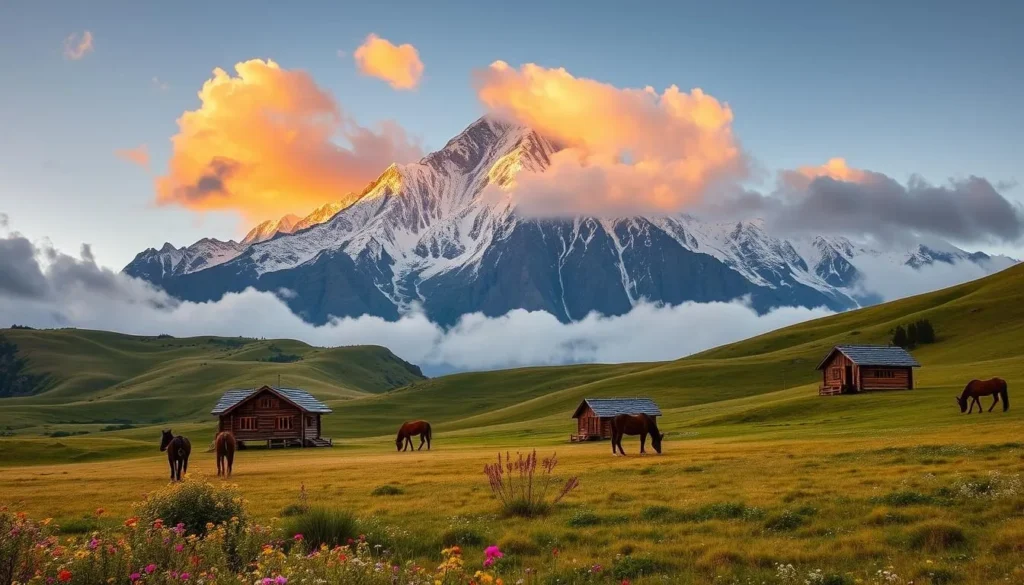
The magical Fairy Meadows with Nanga Parbat (Killer Mountain) in the background
Fairy Meadows offers one of the most spectacular mountain views in the world. This lush alpine meadow sits at the base of Nanga Parbat (8,126m), the world’s ninth-highest mountain, nicknamed “Killer Mountain” for its challenging climbing conditions. The journey to Fairy Meadows is an adventure in itself – a jeep ride on one of the world’s most thrilling roads followed by a two-hour trek.
Stay overnight in the basic wooden cabins to experience both sunset and sunrise on the mountain face. For the more adventurous, a further trek to Nanga Parbat Base Camp provides an even closer encounter with this majestic peak.
Adventure Tip: The jeep ride to Fairy Meadows’ trailhead costs around 8,000 PKR round-trip. Try to share with other travelers to split the cost. The best time to visit is from June to September when the meadows are lush green.
3. Attabad Lake
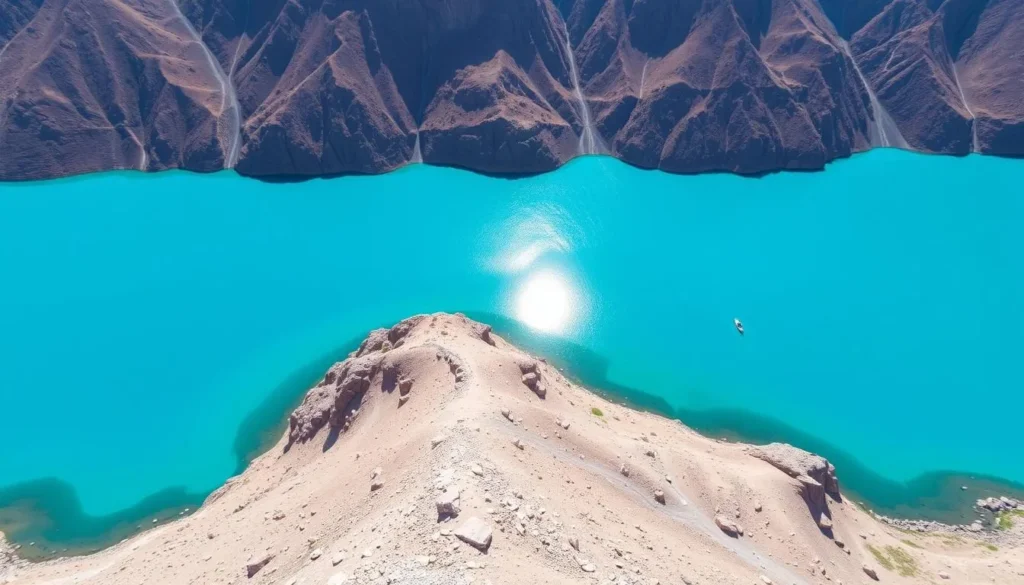
The striking turquoise waters of Attabad Lake, formed after a landslide in 2010
Born from disaster, Attabad Lake has transformed into one of Pakistan’s most stunning attractions. Formed in 2010 when a massive landslide dammed the Hunza River, the lake stretches over 21 kilometers with a depth of over 100 meters. Its surreal turquoise waters, created by glacial silt, contrast dramatically with the surrounding barren mountains.
Boat trips across the lake offer a unique perspective of the Karakoram range, while the surrounding area has developed with small restaurants and shops. Adventure enthusiasts can enjoy jet skiing and other water activities during summer months.
4. Baltit and Altit Forts
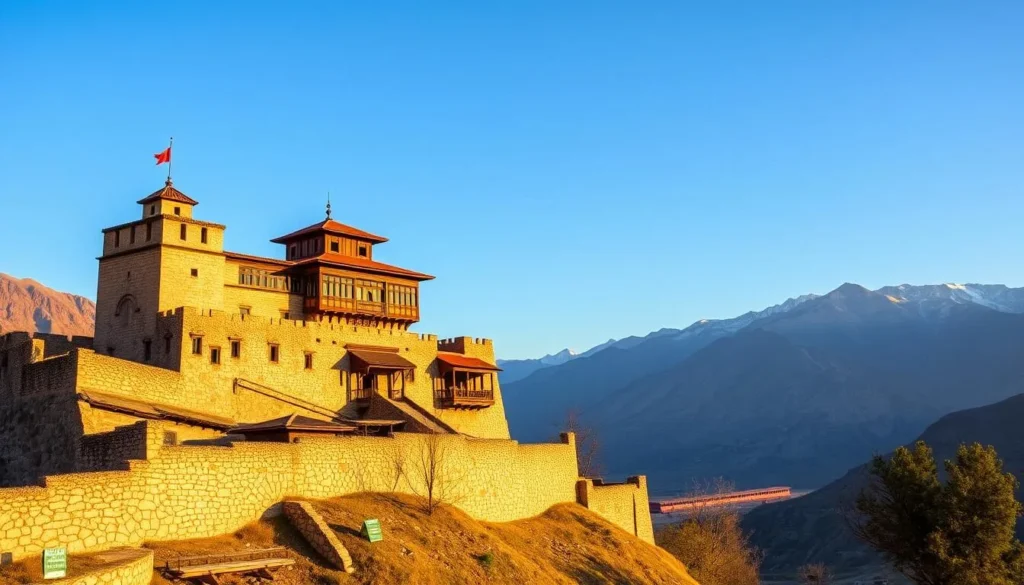
The 700-year-old Baltit Fort showcases traditional Tibetan-influenced architecture
These twin historic forts in Hunza Valley offer fascinating glimpses into the region’s royal past. Baltit Fort, over 700 years old, was the seat of the Mir (ruler) of Hunza until 1945. After extensive restoration by the Aga Khan Trust for Culture, it now serves as a museum showcasing local history and culture.
Nearby Altit Fort, believed to be even older at around 1100 years, perches dramatically on a sheer cliff edge. Both forts feature distinctive architecture influenced by Tibetan, Balti, and local building traditions. Guided tours explain the strategic importance of these structures and the lifestyle of Hunza’s former royal family.
5. Karakoram Highway
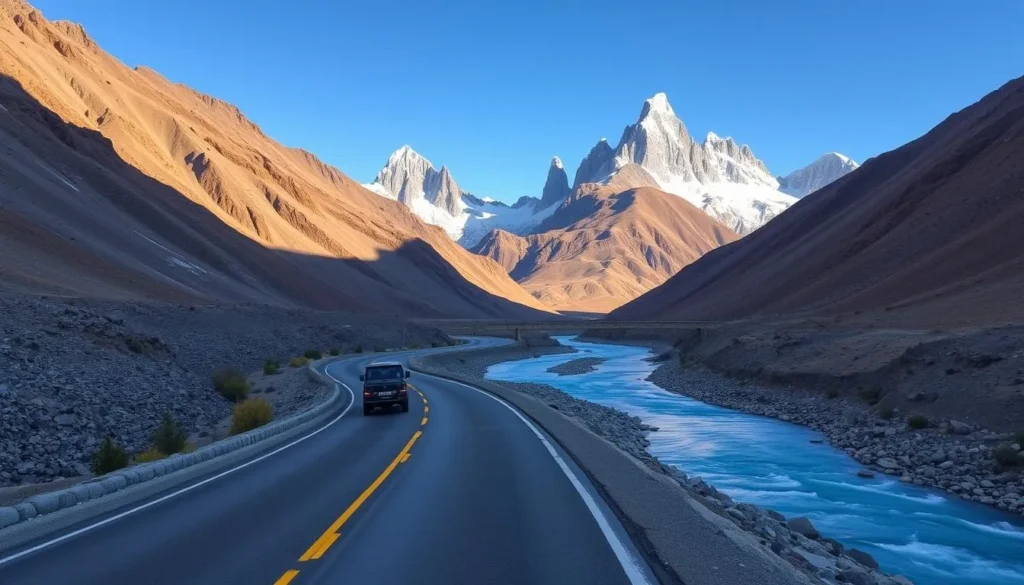
The legendary Karakoram Highway with the distinctive Passu Cones in the background
Often called the Eighth Wonder of the World, the Karakoram Highway (KKH) is the highest paved international road, connecting Pakistan to China across the Karakoram mountain range. This engineering marvel cuts through some of the world’s most challenging terrain, offering travelers spectacular views of mountains, glaciers, and rivers.
Highlights along the KKH include the junction point of three mighty mountain ranges (Karakoram, Himalaya, and Hindu Kush), the distinctive Passu Cones, and numerous glaciers that reach down to the roadside. The highway culminates at the Khunjerab Pass (4,693m), the world’s highest paved border crossing.
Explore the legendary Karakoram Highway
Book a guided tour along this engineering marvel through the world’s most spectacular mountain scenery.
Book KKH Tour
6. Deosai National Park

Deosai National Park transforms into a carpet of wildflowers during summer
Known as the “Land of Giants,” Deosai National Park encompasses the world’s second-highest plateau at an average elevation of 4,114 meters. This vast alpine plateau stretches over 3,000 square kilometers and transforms into a spectacular carpet of wildflowers during the brief summer months (July-September).
The park is home to the endangered Himalayan brown bear, along with snow leopards, Himalayan ibex, and golden marmots. The pristine Sheosar Lake, situated in the heart of the plateau, reflects the surrounding mountains and sky like a perfect mirror. Accessible from Skardu, Deosai requires a 4×4 vehicle and ideally an overnight camping experience to fully appreciate its remote beauty.
7. Khunjerab Pass
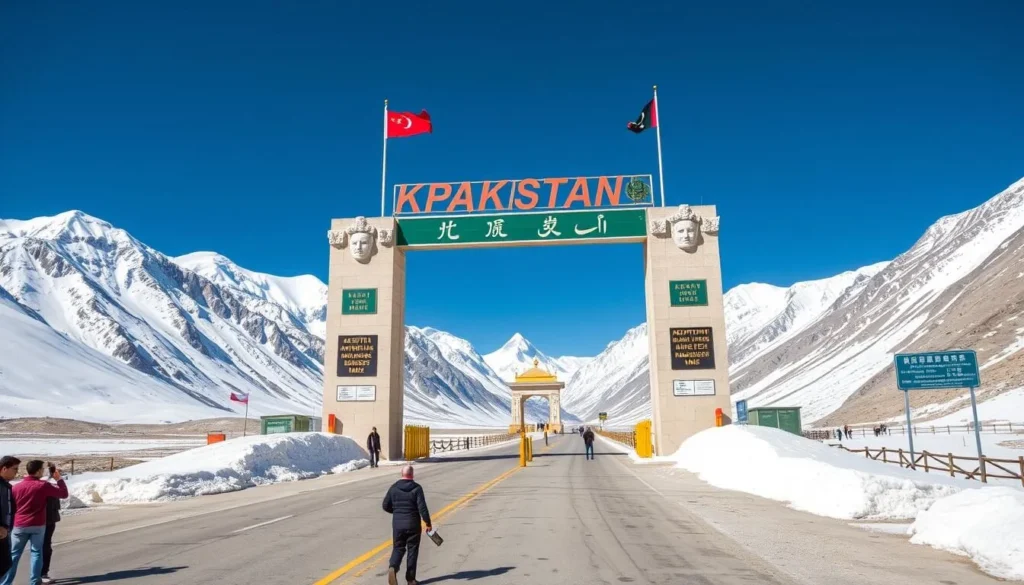
Khunjerab Pass, the world’s highest paved international border crossing at 4,693 meters
At 4,693 meters (15,397 feet), Khunjerab Pass is the highest paved international border crossing in the world, connecting Pakistan with China’s Xinjiang region. The journey to the pass takes you through Khunjerab National Park, home to rare wildlife including Marco Polo sheep, blue sheep, and snow leopards.
The border area features a distinctive gate and monuments marking the friendship between Pakistan and China. Due to its high altitude, visitors often experience cooler temperatures even in summer, with snow possible year-round. The pass is typically closed from December to April due to heavy snowfall.
Border Crossing Tip: If you plan to cross into China, ensure you have the appropriate visa in advance. The border is open only from Monday to Friday, 10:00 AM to 5:00 PM.
More Must-See Attractions
8. Rakaposhi Base Camp
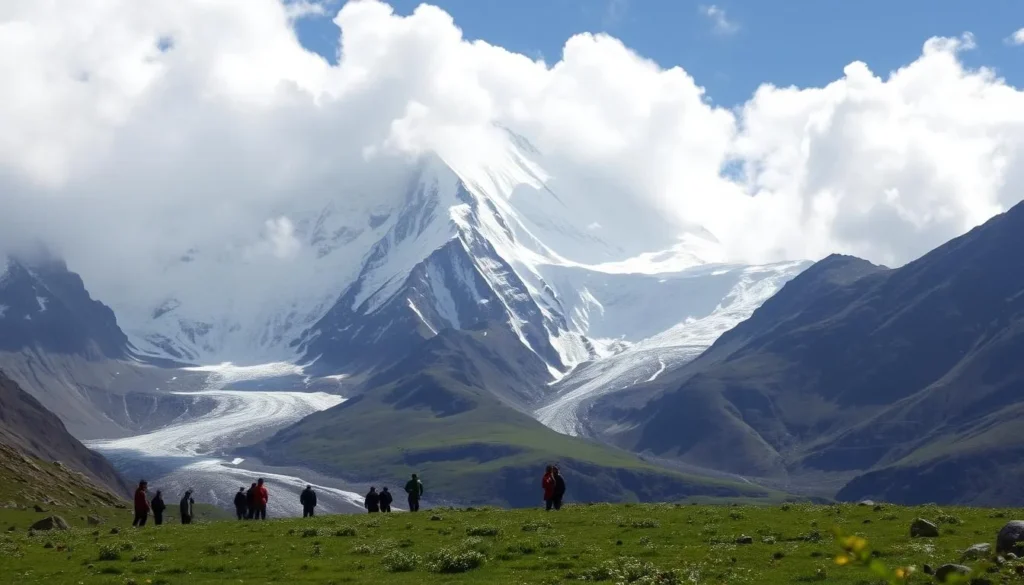
The magnificent Rakaposhi (7,788m) viewed from its base camp
The trek to Rakaposhi Base Camp from Minapin village offers one of the most accessible ways to get close to a 7,000+ meter peak. The day-long hike takes you through pine forests and alpine meadows before reaching a ridge with spectacular views of the Rakaposhi glacier and mountain face. More adventurous trekkers can continue to Diran Base Camp for even more impressive vistas.
9. Shigar Fort
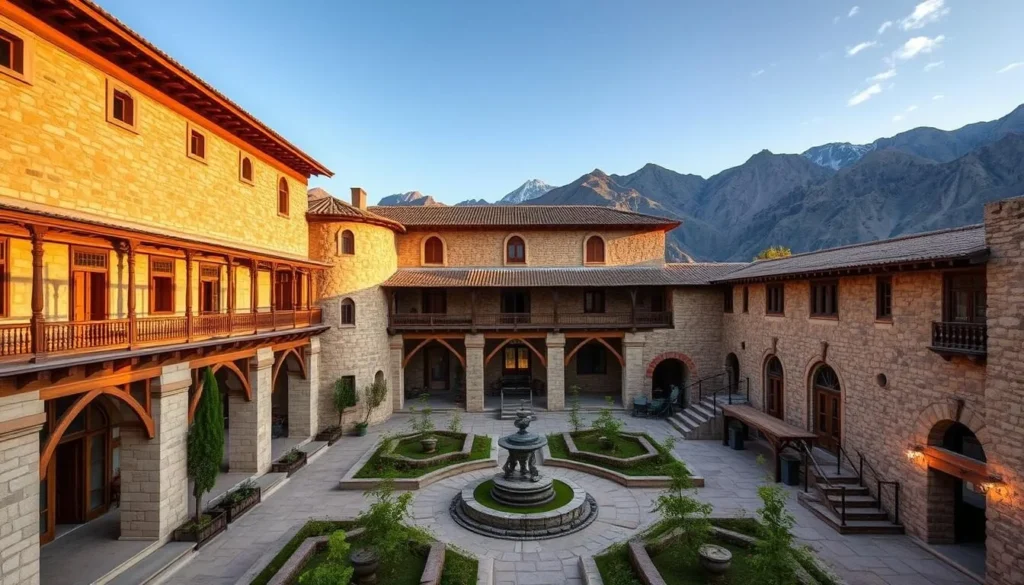
The beautifully restored 17th-century Shigar Fort now functions as a museum and hotel
Located in Shigar Valley near Skardu, this 17th-century fort has been meticulously restored and converted into a museum and heritage hotel. The fort showcases the unique architectural style of Baltistan, with intricate woodwork and strategic defensive design. Visitors can explore the royal quarters, historical artifacts, and enjoy the serene garden setting against a backdrop of mountains.
10. Passu Glacier and Passu Cones
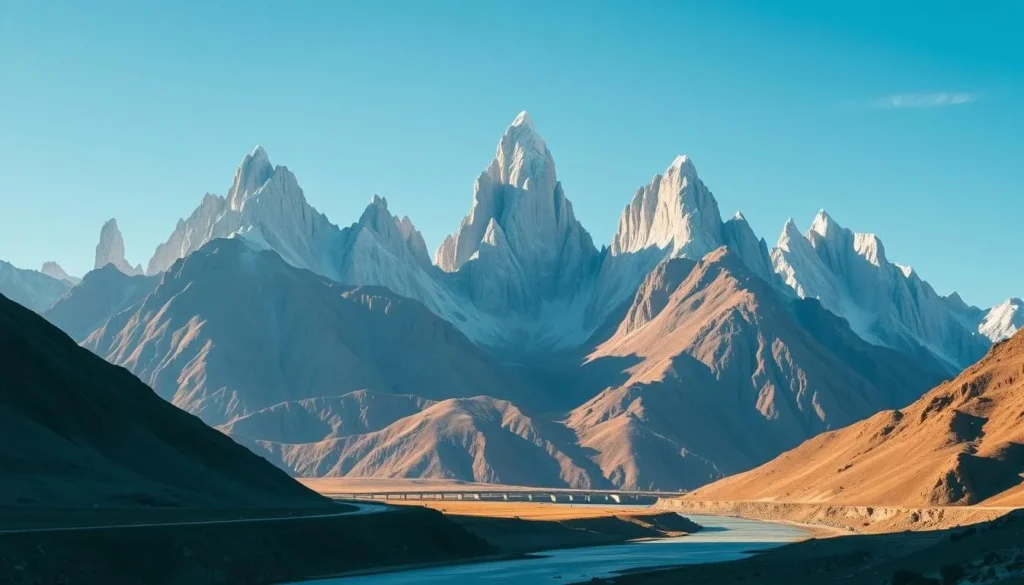
The distinctive cathedral-like peaks of the Passu Cones are an iconic sight
The Passu Cones (also called Passu Cathedral) are among the most photographed mountains in Pakistan, with their distinctive jagged peaks resembling a crown or cathedral spires. Located near Passu village in Upper Hunza, these dramatic formations create an unforgettable backdrop for travelers along the Karakoram Highway.
Nearby, the massive Passu Glacier descends from the mountains to near road level. A short hike allows visitors to get close to this river of ice, though caution is advised due to falling rocks and unstable terrain.
11. Hushe Valley
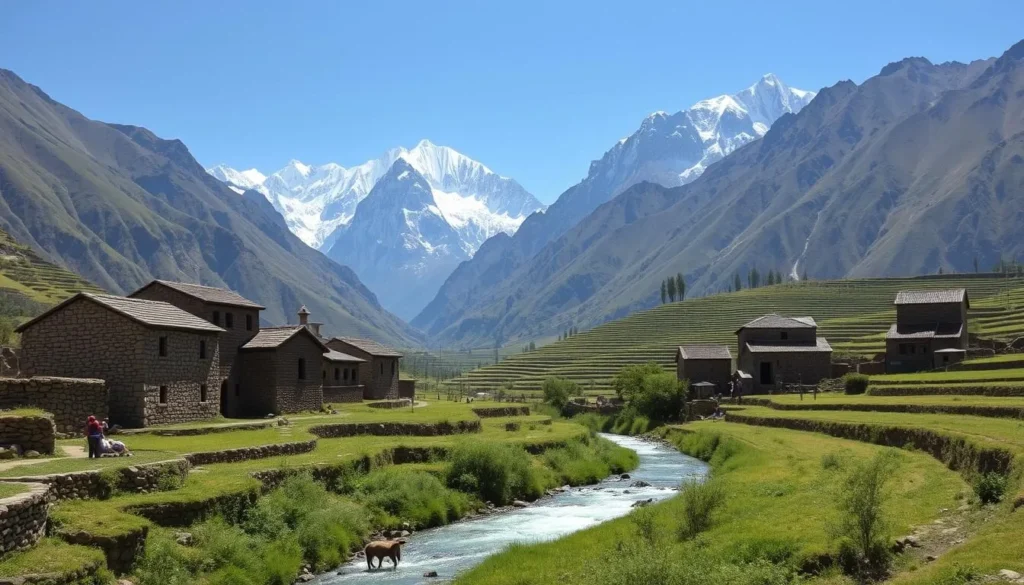
Traditional village life continues in remote Hushe Valley beneath towering peaks
Less visited than Hunza but equally beautiful, Hushe Valley is the gateway to some of the world’s most challenging peaks, including K6, K7, and Masherbrum. The valley is home to renowned mountaineering porters and guides who have summited the world’s highest mountains. Traditional villages with terraced fields cling to the valley sides beneath towering peaks.
Visitors can enjoy day hikes or arrange longer treks to nearby base camps. The valley is accessible by jeep from Skardu, with the journey taking approximately 4-5 hours on rough mountain roads.
Discover the hidden valleys of Gilgit-Baltistan
Book a customized trekking experience with local guides who know the mountains intimately.
Explore Trekking Options
Adventure Activities in Gilgit-Baltistan
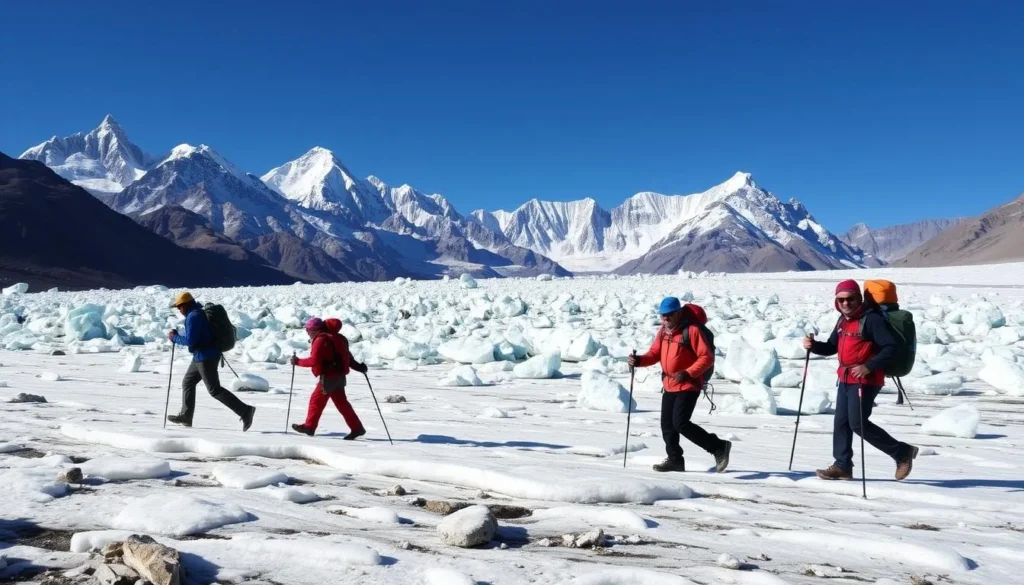
Glacier trekking is one of the many adventure activities available in the region
Gilgit-Baltistan is a paradise for adventure enthusiasts, offering activities ranging from moderate to extreme:
Trekking
The region offers some of the world’s most spectacular trekking routes, from day hikes to multi-week expeditions. Popular options include:
- K2 Base Camp Trek (14-21 days): The ultimate trekking challenge, taking you to the foot of the world’s second-highest mountain.
- Snow Lake Trek (12-15 days): Journey across one of the world’s largest high-altitude glacial basins.
- Rakaposhi Base Camp (1-2 days): An accessible trek offering spectacular mountain views.
- Nanga Parbat Base Camp (2-3 days): Trek from Fairy Meadows to the base of the “Killer Mountain.”
Mountaineering
For experienced climbers, Gilgit-Baltistan offers access to some of the world’s most challenging peaks. Permits are required for all major mountains, with fees varying based on the peak’s height. Popular climbing destinations include:
- Spantik (7,027m): Considered one of the more accessible 7,000m peaks.
- Laila Peak (6,096m): Famous for its distinctive spear-like shape.
- Rush Peak (5,098m): A good option for beginners seeking their first 5,000m summit.
Rock Climbing
The region’s granite walls offer excellent rock climbing opportunities, particularly around Hunza and Nagar valleys. Local guides can provide equipment and instruction for climbers of all levels.
Mountain Biking
The Karakoram Highway and surrounding valleys provide epic mountain biking routes with stunning scenery. Bikes can be rented in major towns, and specialized tour operators offer guided cycling adventures.
Rafting and Kayaking
The Indus and Hunza rivers offer thrilling white-water experiences, with rapids ranging from Grade II to Grade V. The best season for water sports is from June to September when glacial melt increases water levels.
Adventure Safety Tip: Always hire experienced local guides for adventure activities, as they understand the terrain and weather patterns. Make sure you have appropriate insurance coverage for high-altitude activities.
Cultural Experiences in Gilgit-Baltistan
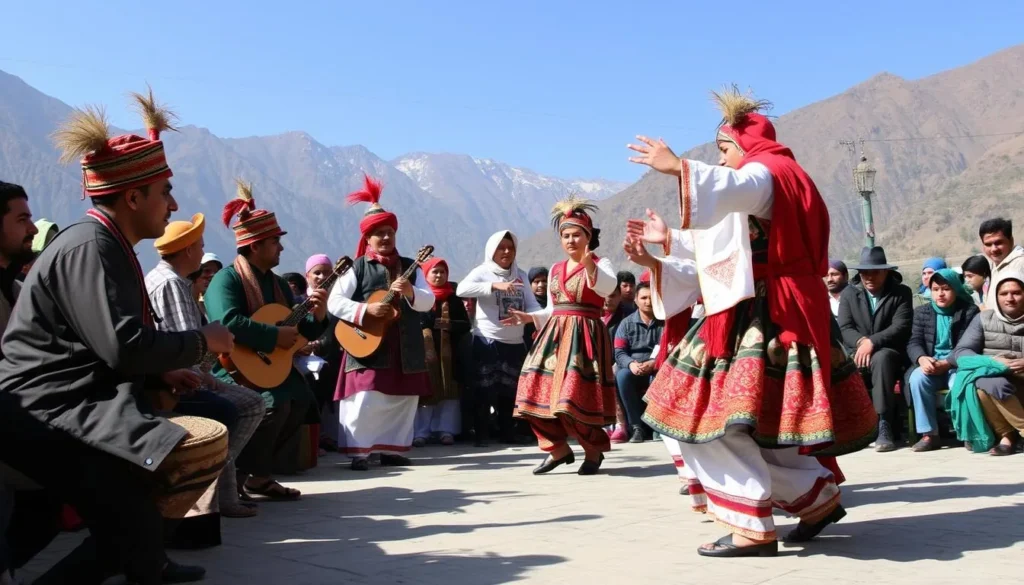
Traditional dance performances showcase the rich cultural heritage of the region
Beyond its natural beauty, Gilgit-Baltistan offers rich cultural experiences that reflect its diverse ethnic heritage and historical significance as a crossroads of civilizations:
Local Festivals
Timing your visit to coincide with local festivals provides unique cultural insights:
- Shandur Polo Festival (Early July): Watch the world’s highest polo tournament at 3,700m between teams from Gilgit and Chitral.
- Jashn-e-Baharan (March-April): Spring festival celebrating the blooming season with music, dance, and traditional sports.
- Harvest Festivals (September-October): Various communities celebrate the autumn harvest with thanksgiving ceremonies and feasts.
Traditional Crafts
The region is known for its distinctive handicrafts, which make excellent souvenirs:
- Handwoven Carpets: Intricate designs reflecting local cultural motifs.
- Pashmina Shawls: Made from the fine wool of mountain goats.
- Stone Carving: Particularly in Baltistan, where artisans create beautiful objects from local soapstone.
- Embroidery: Each valley has its distinctive embroidery style, with Hunza’s being particularly renowned.
Historical Sites
Beyond the famous forts, several historical sites offer glimpses into the region’s past:
- Rock Carvings near Chilas: Ancient petroglyphs dating back to the 1st millennium BCE.
- Buddha Rock in Skardu: A large rock carving showing Buddha, evidence of the region’s Buddhist past.
- Chaqchan Mosque in Khaplu: One of the oldest mosques in the region, built in 1370.
Local Cuisine
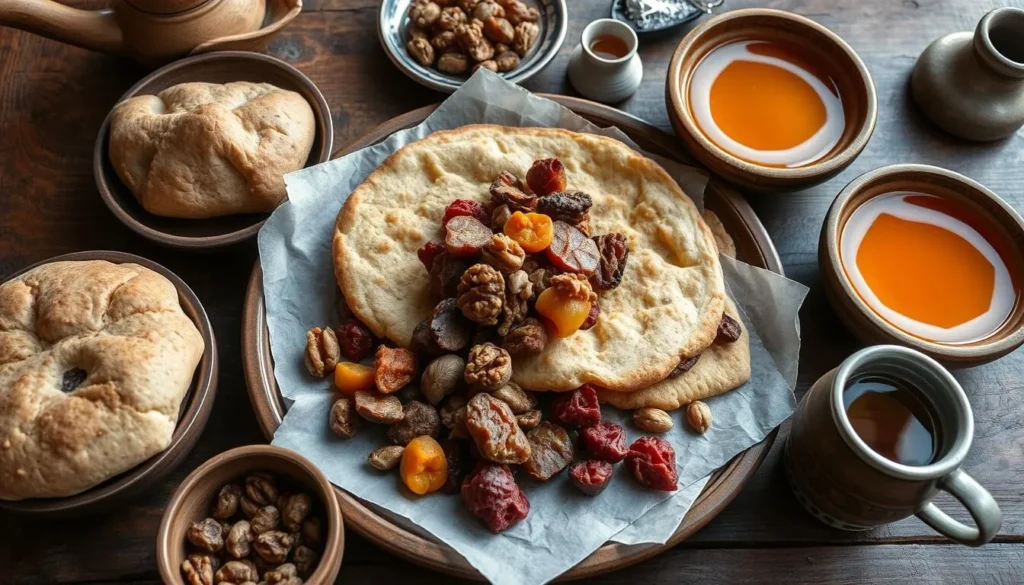
Traditional Hunza cuisine features unique dishes like chapshuro and dried fruits
The cuisine of Gilgit-Baltistan reflects its harsh mountain environment and agricultural traditions:
- Chapshuro: Flatbread stuffed with meat and spices, a staple in Hunza.
- Harissa: A slow-cooked stew of meat and wheat, popular in winter.
- Mamtu: Steamed dumplings filled with minced meat and onions.
- Apricot Products: From fresh and dried fruits to oils and jams, apricots feature prominently in local cuisine.
- Tumoro Tea: Salt tea with butter, a warming beverage for cold mountain days.
Cultural Tip: When visiting villages, respect local customs by dressing modestly. Women should cover their shoulders and knees, while men should avoid wearing shorts in conservative areas. Always ask permission before photographing people.
Practical Tips for Visiting Gilgit-Baltistan
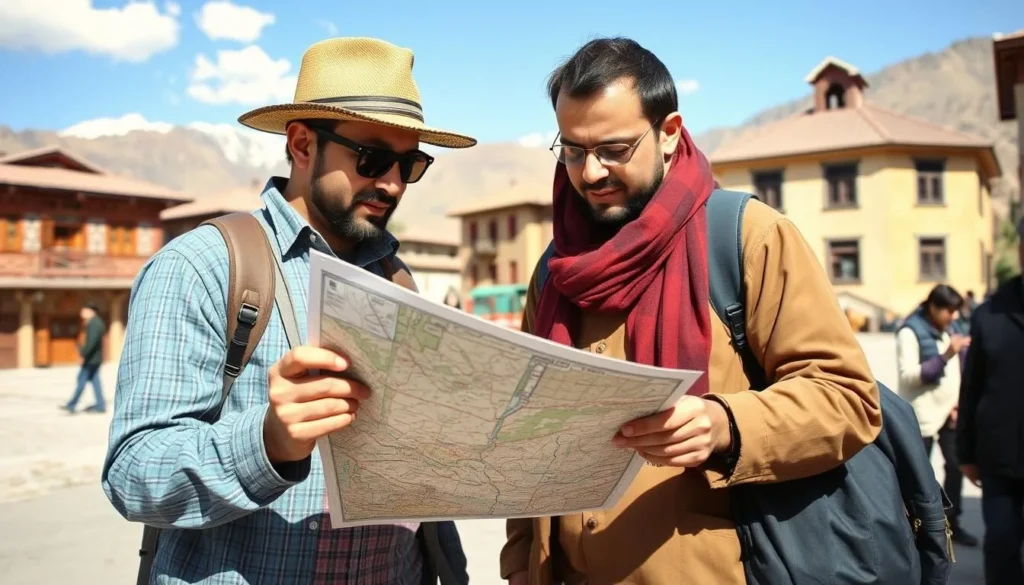
Local guides can provide invaluable assistance during your visit
Permits and Documentation
Foreign visitors to Gilgit-Baltistan need to be aware of permit requirements:
- Most areas are open without special permits, but some border regions and trekking routes require No Objection Certificates (NOCs).
- Trekking to major base camps (K2, Nanga Parbat, etc.) requires permits arranged through registered tour operators.
- Always carry multiple photocopies of your passport and visa for checkpoints along the Karakoram Highway.
Money and Banking
Banking facilities are limited outside major towns:
- ATMs are available in Gilgit, Skardu, and Hunza, but may not always work reliably.
- Bring sufficient cash (Pakistani Rupees) for your entire trip, especially when visiting remote areas.
- Credit cards are accepted only at high-end hotels and some tourist shops in major towns.
- The world’s highest ATM is located at Khunjerab Pass, but don’t rely on it being operational!
Communication
Staying connected can be challenging:
- Mobile coverage is available in major towns but patchy or non-existent in remote valleys.
- SCOM and Zong offer the best coverage in the region.
- Internet cafes can be found in Gilgit, Skardu, and Hunza, but speeds are generally slow.
- Consider purchasing a local SIM card upon arrival in Pakistan for better connectivity.
Health and Safety
Prepare for limited medical facilities:
- Bring a comprehensive medical kit, including altitude sickness medication if trekking above 3,000m.
- Hospitals are available in Gilgit and Skardu, but for serious conditions, evacuation to Islamabad may be necessary.
- Drink only bottled or properly treated water.
- Acclimatize properly when ascending to high altitudes to prevent altitude sickness.
Travel Insurance Tip: Ensure your travel insurance covers high-altitude activities and helicopter evacuation, as medical facilities are limited in remote areas.
Packing Essentials
Pack strategically for mountain conditions:
- Layered clothing for variable temperatures (even summer nights can be cold)
- Quality sunglasses and sunscreen (UV radiation is intense at high altitudes)
- Comfortable hiking boots if planning any trekking
- Headlamp or flashlight (power outages are common)
- Basic medications and first-aid supplies
- Power bank for charging devices (electricity can be unreliable)
Suggested Itineraries for Gilgit-Baltistan
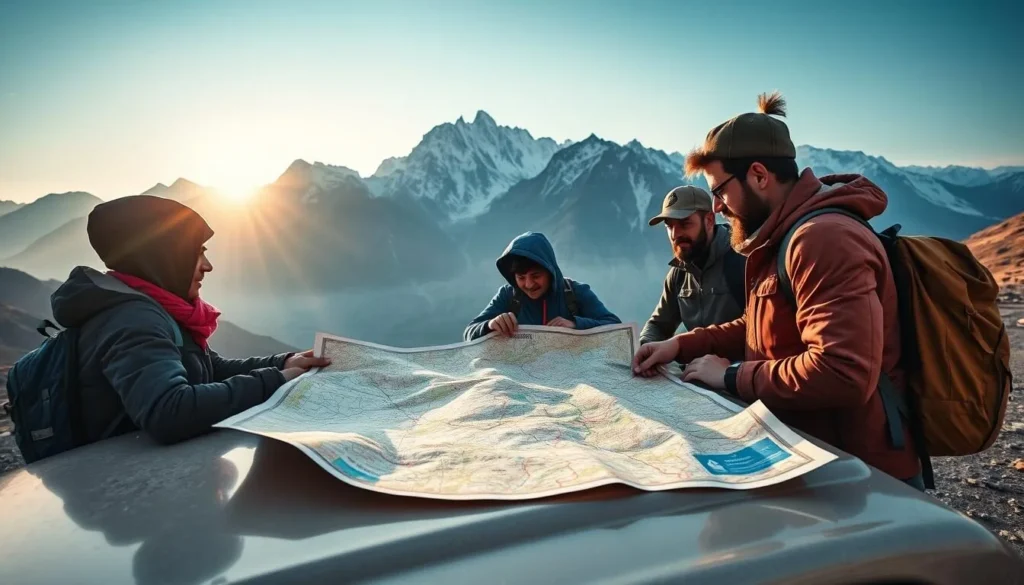
Planning your route through Gilgit-Baltistan’s vast mountain landscape
Classic 7-Day Itinerary
| Day | Location | Activities |
| Day 1 | Islamabad to Gilgit | Early morning flight to Gilgit or overnight bus via KKH |
| Day 2-3 | Hunza Valley | Explore Karimabad, visit Baltit and Altit Forts, Eagle’s Nest viewpoint |
| Day 4 | Upper Hunza | Attabad Lake, Passu Cones, Hussaini Suspension Bridge |
| Day 5-6 | Fairy Meadows | Jeep ride and trek to Fairy Meadows, day hike to Nanga Parbat Base Camp |
| Day 7 | Return to Islamabad | Flight from Gilgit or bus journey via KKH |
Comprehensive 14-Day Itinerary
| Day | Location | Activities |
| Day 1 | Islamabad to Gilgit | Flight or overnight bus to Gilgit |
| Day 2-4 | Fairy Meadows | Jeep ride and trek to Fairy Meadows, day hike to Nanga Parbat Base Camp |
| Day 5 | Gilgit | Explore Gilgit town, visit local bazaars |
| Day 6-7 | Minapin/Rakaposhi | Day trek to Rakaposhi Base Camp |
| Day 8-9 | Hunza Valley | Karimabad, Baltit and Altit Forts, local villages |
| Day 10 | Upper Hunza | Attabad Lake, Passu, Hussaini Bridge |
| Day 11 | Khunjerab Pass | Day trip to Pakistan-China border |
| Day 12-13 | Skardu & Shigar | Fly to Skardu, visit Shigar Fort, Upper Kachura Lake |
| Day 14 | Return to Islamabad | Flight from Skardu to Islamabad |
Ready for your Gilgit-Baltistan adventure?
Book a customized tour package with experienced local guides who can show you the best of this mountain paradise.
Explore Tour Packages
Best Photography Spots in Gilgit-Baltistan
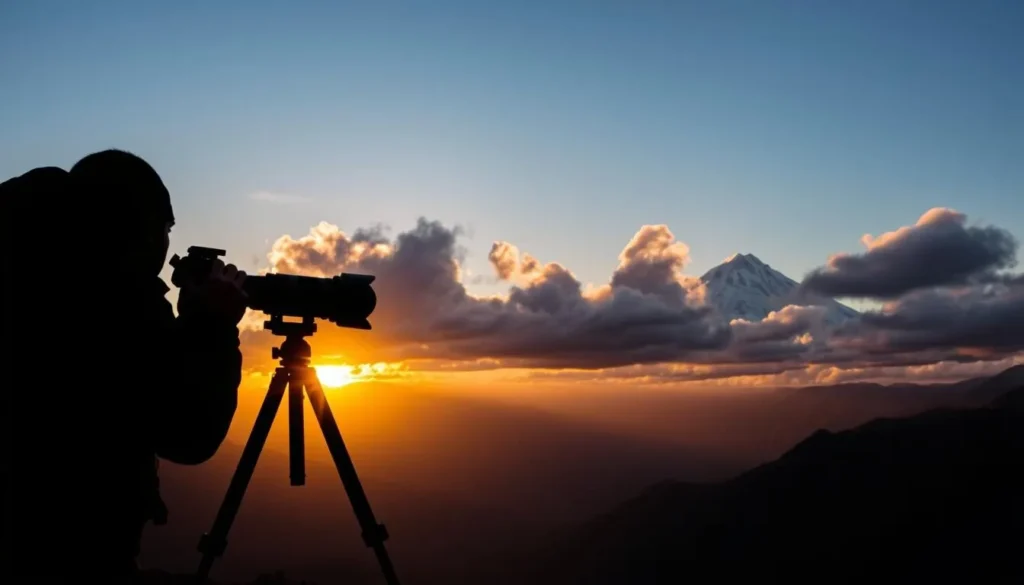
Eagle’s Nest viewpoint offers spectacular sunset photography opportunities
Gilgit-Baltistan is a photographer’s paradise, with endless opportunities for landscape, cultural, and adventure photography. Here are some prime locations for capturing unforgettable images:
Landscape Photography
- Eagle’s Nest, Hunza: Sunrise and sunset views of Rakaposhi, Golden Peak, and Hunza Valley.
- Passu Cones Viewpoint: The iconic jagged peaks reflected in the Hunza River.
- Attabad Lake: The surreal turquoise waters contrasting with barren mountains.
- Fairy Meadows: Dawn light on the massive north face of Nanga Parbat.
- Deosai Plains: Wildflowers and rolling meadows with mountain backdrops in summer.
- Khaplu Valley: Terraced fields with traditional villages and mountain views.
Cultural Photography
- Gilgit Bazaar: Vibrant market scenes and local life.
- Baltit and Altit Forts: Ancient architecture against mountain backdrops.
- Shandur Polo Festival: Action shots of the world’s highest polo tournament.
- Harvest Season in Hunza: Locals working in apricot orchards and wheat fields.
Photography Tips
- The best light for mountain photography is during the golden hours (early morning and late afternoon).
- Bring polarizing filters to enhance the blue skies and reduce glare from snow and water.
- Pack extra batteries as cold temperatures at high altitudes drain them quickly.
- Always ask permission before photographing local people, especially in more conservative areas.
- Consider bringing a tripod for low-light conditions and night photography.
Photography Tip: The clearest mountain views typically occur in early morning before clouds build up. Plan to be at key viewpoints at dawn for the best shots of major peaks.
Experience the Magic of Gilgit-Baltistan
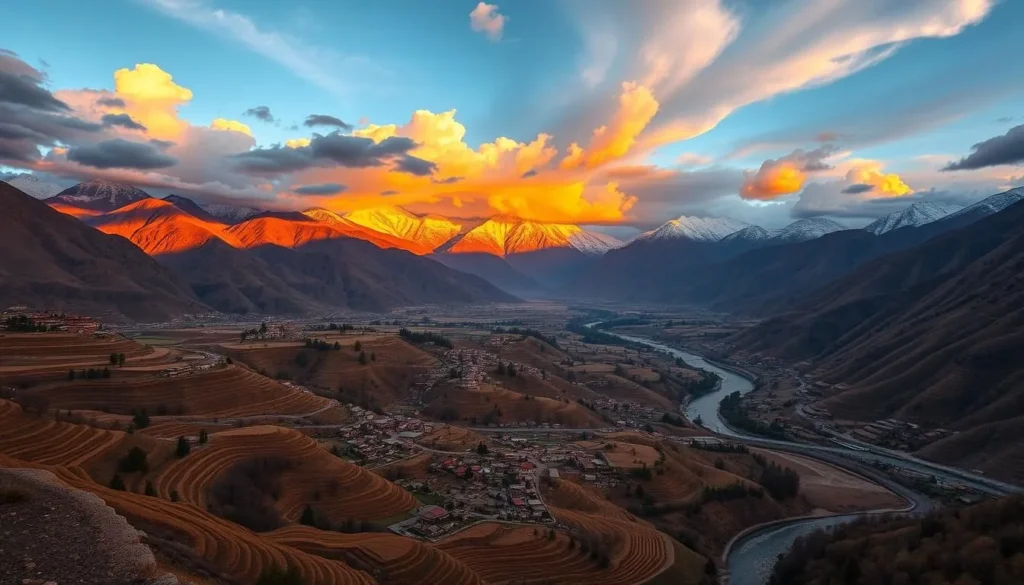
The magical alpenglow on Karakoram peaks at sunset
Gilgit-Baltistan represents Pakistan at its most magnificent – a land where nature’s grandeur meets rich cultural traditions, where ancient silk routes wind beneath some of the world’s highest peaks, and where the hospitality of mountain communities leaves as lasting an impression as the landscapes themselves.
Whether you come seeking adventure on towering peaks, cultural insights in remote valleys, or simply the peace that comes from standing in the presence of nature’s most spectacular creations, Gilgit-Baltistan offers experiences that will remain etched in your memory long after you’ve returned home.
As you plan your journey to this mountain paradise, remember that the true magic of Gilgit-Baltistan lies not just in its famous attractions but in the unexpected moments – a cup of tea shared with a local family, the perfect reflection of a mountain in a still lake at dawn, or the sense of accomplishment after reaching a viewpoint that few others have seen. This is a land that rewards those who travel with open hearts and curious minds.
The mountains are calling – and Gilgit-Baltistan awaits your footsteps.
Begin your Gilgit-Baltistan adventure today
From flights and accommodations to guided tours, we can help you plan every aspect of your journey to this mountain paradise.
—
The above is subject to change.
Check back often to TRAVEL.COM for the latest travel tips and deals.
